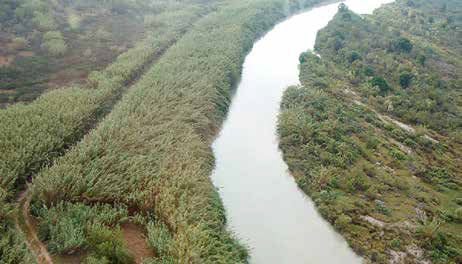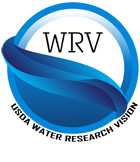ARS Maintains a Focus on User Needs. ARS places science and management user needs at the forefront of tool and technology development to ensure that decision-support tools are effective and used. Thus, ARS scientists have developed hundreds of widely used and recognized tools to answer fundamental scientific and management questions locally and globally.
The involvement of end-users provides a deeper understanding of their needs and increases the likelihood of meeting those needs. Focus on user needs begins with identifying the relevant users and involving them in tool development as an extension of the entire research process. Scientists are use these tool-users in their own research to answer fundamental scientific questions. With complex decisions involving multiple stakeholders, effective application of tools includes facilitating learning processes among groups of stakeholders and supporting practices that foster social involvement.
ARS prioritizes tested, credible tools with user-friendly and efficient tool design. Tools that assist producers with decision making by providing information tend to be adopted over those that simply prescribe actions. ARS assesses existing tools with users to determine how well they are meeting needs and what improvements are required. An important part of building credible tools is demonstrating their use and value in applied science settings. ARS has established transparency and two-way communication between model developers and users. ARS scientists will continue to develop experiments and engage partners and stakeholders to provide necessary calibration and validation and will conduct demonstrations and training in applied tool use.
With complex decisions involving multiple stakeholders, effective application of tools includes facilitating learning processes among groups of stakeholders.
|
ARS Identifies Gaps, Needs, and Barriers Related to Management Tools. ARS the identifies needs for additional tools and issues with existing tools. This effort includes assessing whether management tools demonstrate future interrelationships as a function of changing external impacts, climate change, shrinking land for crop and animal production, and limited water resources. ARS will assess the need for tools to inform emerging agricultural systems such as vertical farming, urban agriculture, smart agricultural systems, and the integration of solar farms and agriculture. Decision support tools are among the most successful management applications. However, accurate decision support requires the establishment of local and regional networks for real-time monitoring for multiple variables. Real-time micrometeorological, plant, and soil water sensing networks at farm and watershed scale will better inform irrigation strategies, and short- and long-term water policies.
Water issues and their solutions are complex and often involve other sectors. Therefore, science management tools should be holistic and address the complexities that exist across sectors. ARS ensures that models have an intentional science-to-management interface so that they produce sustainable management strategies for water and agroecosystems.
|
|

ARS will continue efforts and seek additional partners for near-real-time mapping of agricultural water resources, water use monitoring, near-term forecasting and modelling of irrigation scheduling and quantifying accuracy, and improved forecasting of rainfall and snow melt. The studies will be conducted at the field and watershed scales using established agrometeorological networks across regions, and results will inform integrated decision support systems.
ARS Builds Capacity to Share Data and Technologies. Tools to manage scientific data are just as important as tools to make scientific measurements. This is especially relevant because big data is a rich resource for smart technology advancements and will continue to facilitate improvements in all areas of agriculture. Big data analytics are a major component in many agricultural projects. ARS will continue to explore new approaches using machine learning (ML) and artificial intelligence (AI) techniques. Secure, but feasible access to databases, will support model input, strengthen AI algorithms, and provide useful products driven by data analytics. Public/private data partnerships will facilitate broader data availability. Modular design and establishing open-source repositories will facilitate quicker prototyping and solutions for hard-tools (e.g., plant and soil sensors) and soft-tools (models) and will allow tools to be updated as technology improves.
ARS Maintains a Repository of Existing Tools. Existing tools include sensors and models that inform scientific research and end-user decision making. Sensors range from in situ soil and water sensors to proximal ground-based, and remote aerial- and satellite-borne sensors. Analytical tools range from models of specific processes such as heat, water, or solute movement to complex biophysical models that integrate multiple processes and provide estimates of multiple outputs at multiple scales. Many of the ARS models are cataloged and publicly available in one location (https://www.ars.usda.gov/research/software/). ARS will build upon this framework to develop and maintain a complete, categorized, and updated catalog to help users access available tools.
|
 Science and Management Tools
Science and Management Tools
